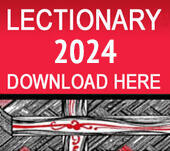He hōnore, he korōria ki te Atua i runga rawa.
He maungārongo ki te mata o te whenua.
He whakaaro pai ki ngā tāngata katoa.
E mihi ana hoki ki a Kīngi Tuheitia, te Kāhui Ariki me ngā kanohi o te Kiingitanga kua tae mai ki te tautoko tēnei rā.
Ngāti Tapu, Ngāi Tamarawaho; tēnā koutou.
E ngā iwi katoa o Tauranga Moana; tēnā koutou.
Tātou katoa kua tau nei; tēnā koutou, tēnā koutou, tēnā koutou katoa.
Ko Pihopa Anaru o Waiapu ahau.
I stand here today as the 16th Bishop of the Anglican Diocese of Waiapu. My predecessors form an unbroken chain linking the office I hold as the Bishop of this diocese to the events of the 1860’s and Bishop William Williams, the first bishop of Waiapu.
The bishop before me was Bishop David Rice and before him Bishop John Bluck. Alongside Bishop John was Assistant Bishop George Connor in the Bay of Plenty. It was Bishop George who stood alongside Atipihopa Whakahuihui Vercoe and Mr Don Shaw in 1997 when they returned land that had been held by CMS to Otamataha Trust. Before Bishop John was Bishop Murray Mills, who followed Bishop Peter Atkins. It was Bishop Peter who, in 1987, voiced his support for nga iwi o Tauranga Moana in the struggles for the Waitangi Tribunal hearings.
Bishop Peter was preceded by Bishop Ralph Matthews, who had followed Archbishop Sir Paul Reeves, who had followed on from Archbishop Norman Lesser. Bishop George Cruickshank was the 8th bishop of the diocese and was preceded by Bishop George Gerard and before him Bishop Herbert Williams. Bishop Herbert was the 6th bishop of Waiapu, the son of Bishop Leonard Williams the 3rd bishop of Waiapu and grandson of Bishop William Williams, the first bishop of Waiapu. Between them was Bishop William Sedgwick (5th), Archbishop Alfred Walter Averill (4th), and Bishop Edward Stuart (2nd).
The pectoral cross that I wear today was first presented to Bishop Herbert Williams, grandson to William Williams, in 1930, then again to Archbishop Sir Paul Reeves in 1971 and then to me in 2014. I wear it today in recognition of the symbolism of the office of Bishop of Waiapu and the physical link to my earliest predecessor William Williams, father to Leonard, grandfather to Herbert, brother to Henry Williams, and colleague and friend to Archdeacon Alfred Brown.
Bishop William Williams and Archdeacon Alfred Brown, together and with the wider Church Missionary Society Central Land Board made a decision in 1866 to yield the Te Papa land, the land that we gather on today, to the Crown in what was an act of human failure under intense and undue pressure. I stand here today with the Church to acknowledge our past, our connection to the actions of the past, to support this apology and to commit to seeking a better relationship for the future.
In May this year Te Hinota Whanui, the General Synod of Te Hahi Mihinare ki Aotearoa ki Niu Tireni, ki Nga Moutere o Te Moana Nui a Kiwa met in New Plymouth and heard the request that Archbishop Philip, Pihopa Ngarahu and I submitted to them to support an apology for the actions of our predecessors, Williams and Brown, in yielding the Te Papa lands to the Crown and ignoring the moral obligations to address the exchange of land back to Ngati Tapu and Ngai Tamarawaho.
Te Hahi Mihinare o Aotearoa stands here today because we have heard the call for an apology for the actions of our predecessors; we have listened to and learned from the events of the past; we have been moved by the stories of the consequences of our predecessors actions, the isolation from the whenua of mana whenua, the marginalisation and dislocation that has been experienced and the hardship that has been endured by mana whenua for more than 150 years.
We have heard afresh the knowledge and wisdom of te Ao Maori brought to us Chief Judge Eddie Durie about the continuing relationship between the donor and donee in a transaction of land. In our listening to history we have sought to find an expression of our desire for reconciliation, for addressing the wrongs of the past.
We too, knowing our own human frailty and capacity for making mistakes, have listened with compassion to the accounts of our predecessors, Williams and Brown, who sought to uphold and honour the trust that was given them by nga iwi o Tauranga Moana for Te Papa. We acknowledge that our predecessors, Williams and Brown, struggled relentlessly to appeal to the Crown to act with honour and not seek to claim ownership of Te Papa, and instead to allow the Mission to continue in partnership with Nga Iwi o Tauranga Moana.
We have heard the realities of the fractured relationships and broken trust that shaped the social, religious and political environment of the relationships between the mission and nga iwi in 1866.
We acknowledge that this church ultimately failed in our moral obligations, finally yielding the land for sale to the Crown under intense and undue pressure from the government of the day.
I have never before experienced the palpable sense of overwhelming grief that was present in the house of te Hinota Whanui this year as we all stood in solemn respect to stand behind Archbishop Philip as he read the apology to the small ope who had traveled from Tauranga to support us and witness the presentation of the motion of apology to the synod.
Those of us here from te Haahi Mihinare, as we support the reading and presentation of this apology, bring to this day the representative grief of a nation of Anglican bishops, clergy and laity. We come with friends and supporters from NZ Church Missionary Society, the Methodist Church, the Roman Catholic Church and with support from the wider Church community across Tauranga Moana, who have come to support this act of repentance and reconciliation and bear witness to this day.
We bring to today the memory of our predecessors who we know sought to find the best of relationships between the mission, the church and nga iwi o Tauranga Moana and succumbed to intense pressure from the Crown. We come with solemn sadness that the events of the past have cast such a long shadow on the generations that have followed and left a legacy of injustice and controversy. We come in the anticipation that this act of repentance may help to shine a light of reconciliation across this whenua.
No reira, e nga rangatira ma, e nga hoa ma, tena koutou, tena koutou, tena tatou katoa.

















Comments
Log in or create a user account to comment.